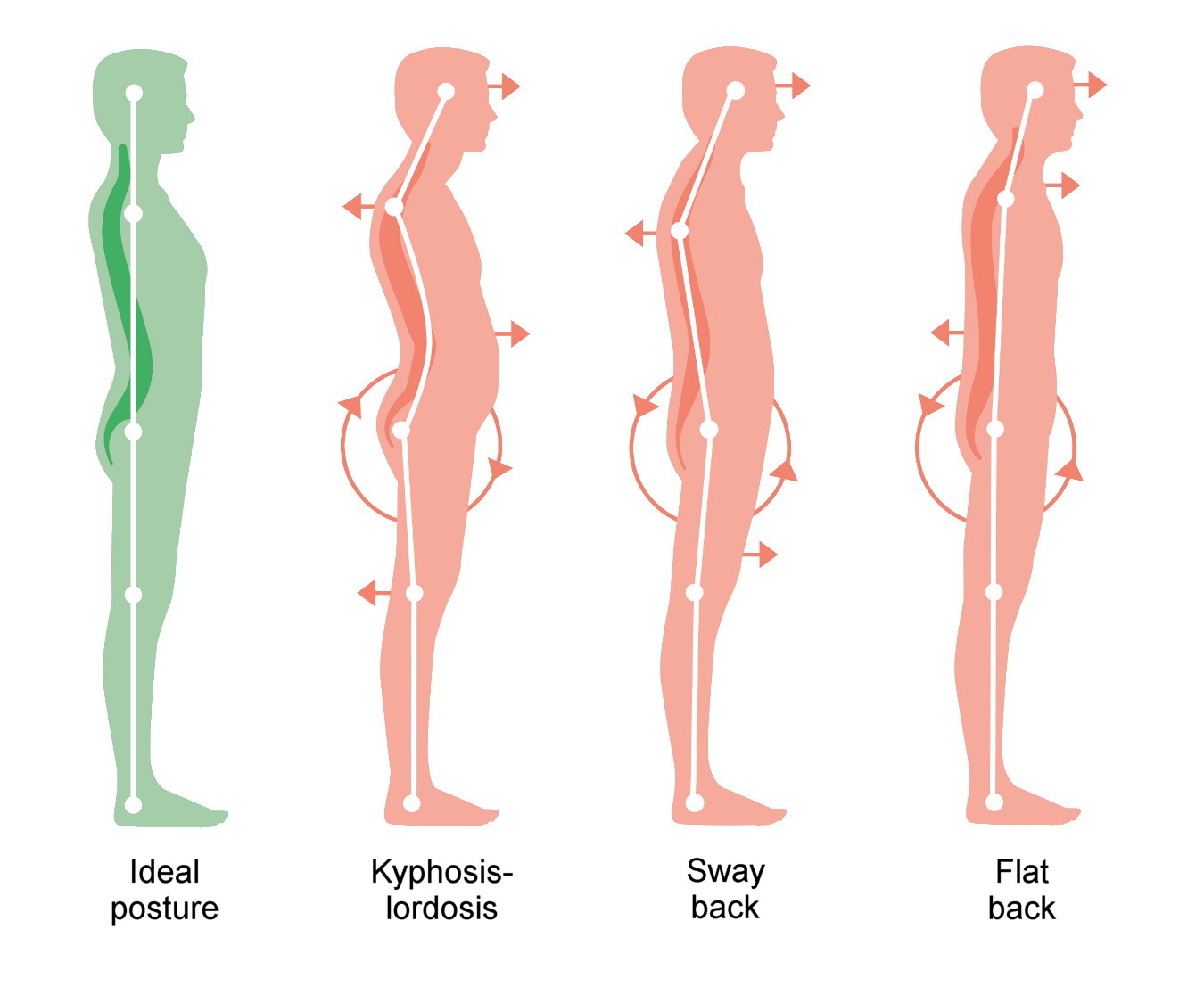Back
How to Correct Your Posture for Better Health and Pelvic Floor Health
By Shannon Strauch, PTA, STMT-1 on 4/24/2024

Good posture is more than just standing up straight; it's about aligning your body to reduce strain on muscles and joints, prevent pain, and improve overall health. In this blog post, we'll explore the importance of posture and provide practical tips on how to correct it.
Why Posture Matters:
Poor posture can lead to various health issues, including back pain, neck pain, headaches, and even digestive problems. It can also affect your confidence and how others perceive you. Correcting your posture not only feels better but also contributes to a healthier, more confident you.Tips for Correcting Your Posture:
Awareness:
The first step to improving your posture is to become aware of it. Pay attention to how you sit, stand, and move throughout the day. Notice any slouching or hunching.Ergonomic Setup:
Ensure that your workspace, whether at home or in the office, is ergonomically designed. Use a supportive chair that allows your feet to rest flat on the floor and keeps your knees at a 90-degree angle. Position your computer screen at eye level to avoid straining your neck.Standing Tall:
When standing, imagine a string pulling you up from the top of your head. Keep your shoulders back and relaxed, and distribute your weight evenly on both feet. Avoid locking your knees.Sitting Correctly:
Sit back in your chair with your back against the lumbar support. Keep your feet flat on the floor or on a footrest if needed. Use a cushion if your chair doesn't provide enough support for your lower back.Stretching and Strengthening:
Incorporate stretching and strengthening exercises into your routine to improve posture. Focus on exercises that target your core, back, and neck muscles, such as planks, bridges, and shoulder blade squeezes.Mindful Movement:
Be mindful of your posture while performing daily activities like lifting, bending, and reaching. Use proper lifting techniques, bend at the knees instead of the waist, and avoid twisting your spine.Regular Breaks:
Take regular breaks from sitting or standing in one position for too long. Stand up, stretch, and move around to prevent stiffness and muscle fatigue.Professional Guidance:
If you're struggling to correct your posture on your own, consider seeking guidance from a physical therapist or posture specialist. They can assess your posture, provide personalized recommendations, and guide you through exercises to improve alignment.
Understanding Posture and Pelvic Floor Dynamics:
Pelvic Alignment:
Posture significantly impacts pelvic alignment. When you maintain good posture, with your spine aligned and shoulders back, it helps keep your pelvis in a neutral position. This alignment is crucial for proper pelvic floor muscle function and support.Muscular Interaction:
The muscles of the pelvic floor work in coordination with other core muscles to support the pelvic organs, stabilize the spine, and maintain continence. When your posture is poor, such as slouching or overarching the lower back, it can lead to pelvic floor muscle dysfunction and weakness.Pressure Distribution:
Correct posture helps distribute intra-abdominal pressure evenly, reducing strain on the pelvic floor. Conversely, poor posture can increase pressure on the pelvic organs and pelvic floor muscles, contributing to issues like urinary incontinence, pelvic organ prolapse, and pelvic pain.
Effects of Poor Posture on the Pelvic Floor:
Urinary and Fecal Incontinence:
Slouched posture can increase pressure on the bladder and pelvic floor, leading to urinary incontinence. Similarly, poor posture can contribute to fecal incontinence by compromising the ability of the pelvic floor muscles to control bowel movements.Pelvic Organ Prolapse:
Incorrect posture can place excessive downward pressure on the pelvic organs, potentially contributing to pelvic organ prolapse. This condition occurs when pelvic organs, such as the bladder, uterus, or rectum, descend into the vaginal canal due to weakened pelvic floor support.Pelvic Pain and Dysfunction:
Postural deviations, such as an anterior pelvic tilt or rounded shoulders, can cause muscle imbalances and tension in the pelvic floor area. This may lead to pelvic pain, discomfort during intercourse, and overall pelvic floor dysfunction.
Improving Posture for Pelvic Floor Health:
Awareness:
Start by becoming aware of your posture throughout the day. Pay attention to how you sit, stand, and move, making adjustments to maintain a neutral spine and pelvic alignment.Ergonomics:
Ensure that your workspace, including your chair and computer setup, supports good posture. Use a chair with proper lumbar support and adjust your screen to eye level to prevent slouching.Core Strengthening:
Engage in exercises that strengthen the core and pelvic floor muscles. Include exercises like Kegels, bridges, planks, and pelvic tilts to improve muscle tone and support.Postural Exercises:
Incorporate exercises and stretches that target areas prone to poor posture, such as the upper back, shoulders, and hips. This can help correct imbalances and reduce strain on the pelvic floor.
Conclusion:
Maintaining good posture is essential for optimal pelvic floor health. By understanding the relationship between posture and the pelvic floor, making conscious posture adjustments, and incorporating targeted exercises, you can support pelvic floor function, reduce the risk of pelvic floor disorders, and promote overall well-being.Read More:
Fascial Counterstrain of the Musculoskeletal System By Shannon Strauch, PTA, STMT-1 on 10/21/2024 How treating cartilage and fascia can help reduce joint pain and improve organ function The Impact of Long-Distance Cycling on the Pelvic Floor: Pudendal Nerve and Pelvic Dysfunction By Dr. Christine Martirez PT, DPT on 10/18/2024 Learn how long distance cycling can impact the pelvic floor
Are you ready to live pain free?
Request An Appointment